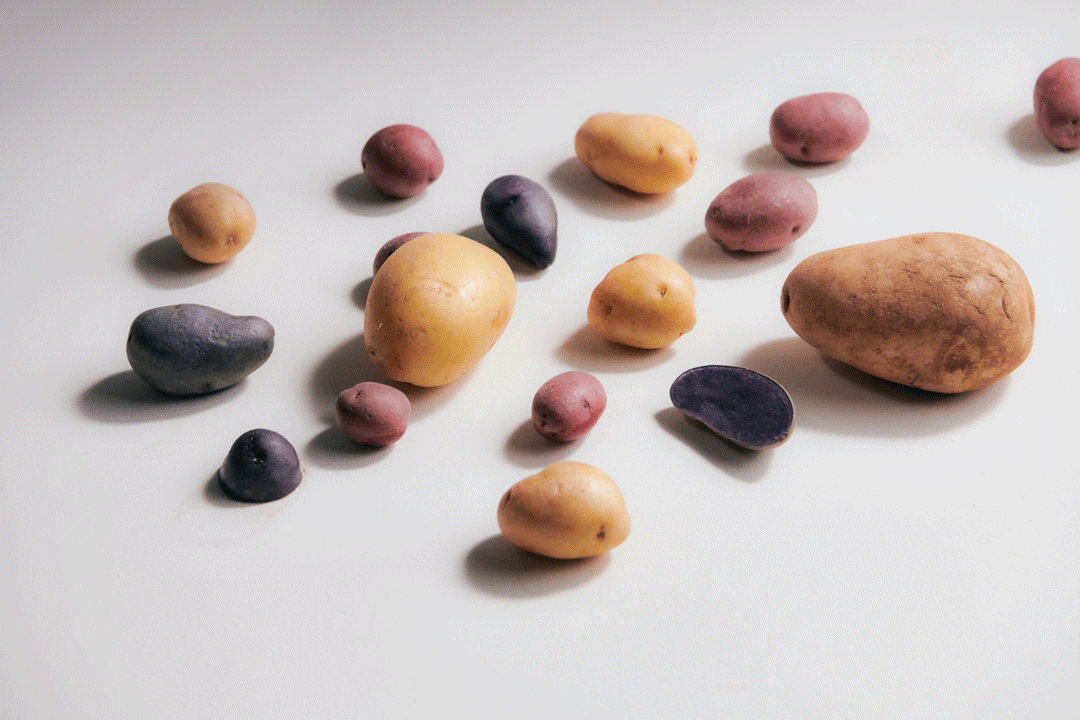
- Share via
Why are boiled potatoes so often considered boring and basic? Boiling performs magic on potatoes. The bubbling, salty water has a particular way of loosening them up: Stiff, dusty spuds emerge from the saltwater jacuzzi uncharacteristically shiny, their stony hearts softened so that they’re creamy, mild and comforting.
A potato is a tuber, a food source — starchy energy — for the plant. As you cook potatoes, the heat first penetrates the outside, slowly working its way to their cores. Their cell walls open up. Starches absorb water, and pectins are released. Cells move apart from one another easily. And the result is that the potatoes become softer, lush and a pleasure to eat.

A boiled potato is endlessly versatile — for salads or sides, for mashing or crushing. Split them in half and roast them cut-side down in the oven for easy, extra-crisp potatoes. But they are just as delicious straight out of the pot and simply dressed with butter.
Paying attention to the way you boil your potatoes will pay off — for optimal texture and flavor. Here are five steps to a better boiled potato:
1. Pick your potato. For eating on their own, pick small and waxy potatoes like fingerlings or baby Yukon Golds, which are creamy and smooth as opposed to starchy and floury like russets. There’s no need to peel them; the skin keeps the potatoes from getting waterlogged. (If you’re boiling potatoes to mash, that’s a different story.)
2. Start in cold water. If you plop potatoes into hot water, the outsides could overcook before the cores. For more even cooking, start with evenly sized, small potatoes. Put them in a big pot, cover with an inch of cold water, then crank the heat to bring to a simmer.
3. Shower them with salt. Dense potatoes don’t absorb seasonings easily, so you’ll need to salt the water liberally so that the water the potatoes do drink up also carries in seasoning. And because potatoes are so timid in flavor, they need that salt to bring them out of their shells. Pour some salt in, then keep going. It’s difficult to oversalt the water (and if so much salt scares you, remember most of it will go down the drain or be saved to cook other starches in).
4. Simmer gently. To eke out tenderness from stubborn starches like whole grains, beans and potatoes, you want bubbling water that rattles the outsides enough to let water in, but not such a forceful agitation that the skins burst. So if you see jacuzzi bubbles, turn down the heat until you see Champagne. The cook time will vary depending on the size and type of your potatoes, but if a fork glides all the way through, they’re ready.
5. Butter them up. You’ve maybe never had a potato without added fat. Baked potatoes are fluffed with sour cream and cheddar; potato salads are dressed with mayonnaise or oil; and chips, fries and roasted potatoes all require oil for crisping. All boiled potatoes need is a toss with butter or olive oil, but crushing them first helps the butter seep into the flesh. And studding the butter with softened leeks and toasted, crushed black peppercorns only accentuates the potato’s earthy, creamy specialness.

Crushed Potatoes With Leek-Peppercorn Butter
More to Read
Eat your way across L.A.
Get our weekly Tasting Notes newsletter for reviews, news and more.
You may occasionally receive promotional content from the Los Angeles Times.











